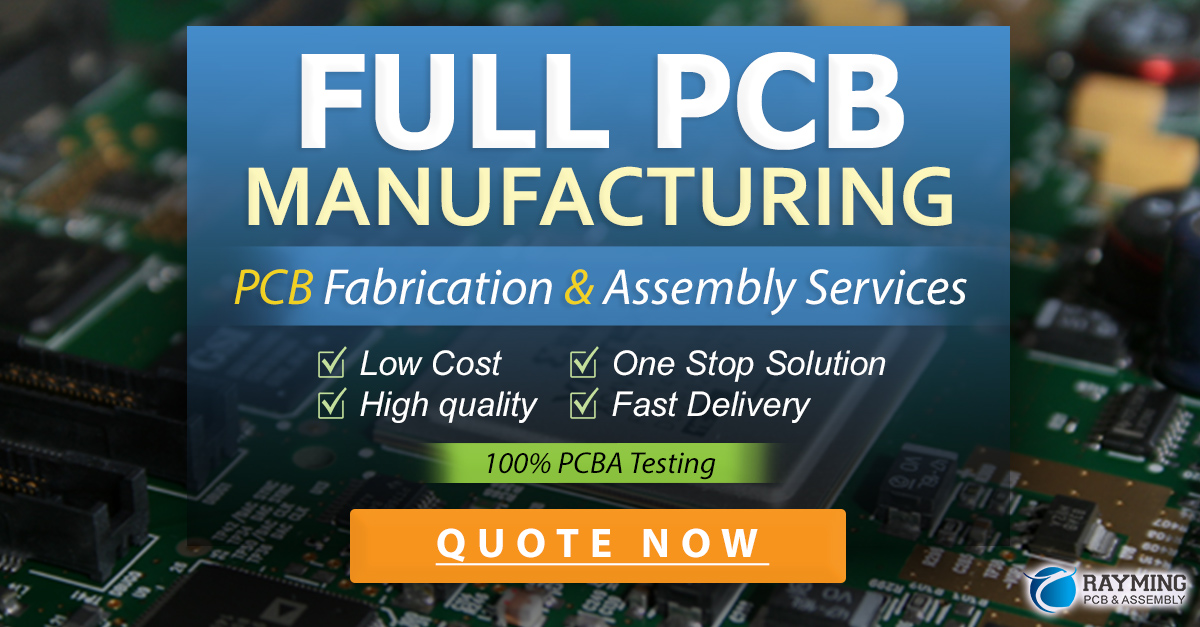Introduction
Selecting the right Electronic Manufacturing Services (EMS) partner is crucial for the success of your electronic product. However, there are many myths and misconceptions surrounding the process of choosing an EMS provider. In this article, we will debunk the top 10 myths and provide you with the facts to help you make an informed decision.
Myth 1: Price is the most important factor when selecting an EMS partner
Fact: Quality, reliability, and expertise are equally important
While price is undoubtedly an important consideration, it should not be the sole deciding factor when choosing an EMS partner. Prioritizing price over quality, reliability, and expertise can lead to costly mistakes and delays in the long run.
Consider the following factors when evaluating an EMS provider:
- Quality control processes
- Technical capabilities and certifications
- Industry experience and expertise
- Financial stability and scalability
- Communication and responsiveness
Myth 2: All EMS providers offer the same services
Fact: EMS providers specialize in different areas and have unique capabilities
Not all EMS providers are created equal. Each provider has its own strengths, weaknesses, and areas of specialization. Some may excel in high-volume production, while others focus on low-volume, high-mix projects. Some providers specialize in specific industries, such as medical devices or automotive electronics.
When selecting an EMS partner, consider your specific needs and requirements:
| Requirement | Description |
|---|---|
| Product complexity | Does the EMS provider have experience with products similar to yours? |
| Production volume | Can the provider handle your expected production volumes? |
| Industry-specific certifications | Does the provider have the necessary certifications for your industry (e.g., ISO 13485 for medical devices)? |
| Geographical location | Is the provider located in a region that aligns with your supply chain and logistics needs? |

Myth 3: Larger EMS providers are always better
Fact: Smaller EMS providers can offer personalized service and flexibility
While larger EMS providers may have more resources and capabilities, they may not always be the best fit for your project. Smaller EMS providers can offer several advantages, such as:
- Personalized attention and service
- Faster decision-making and adaptability
- Flexibility in accommodating custom requirements
- Lower minimum order quantities (MOQs)
Consider your project’s specific needs and whether a smaller EMS provider might be a better fit.
Myth 4: EMS providers are only responsible for manufacturing
Fact: Many EMS providers offer value-added services beyond manufacturing
Modern EMS providers offer a wide range of value-added services to support their clients throughout the product lifecycle. These services can include:
- Design for manufacturability (DFM) analysis
- Component selection and sourcing
- Prototyping and testing
- Supply chain management
- Packaging and logistics
- After-sales support and warranty services
When evaluating an EMS partner, consider the full scope of services they offer and how they can support your project from concept to delivery.
Myth 5: Offshoring is always cheaper than domestic manufacturing
Fact: Hidden costs and risks can offset the benefits of offshoring
Offshoring electronics manufacturing to countries with lower labor costs can seem like an attractive option to reduce expenses. However, there are several hidden costs and risks associated with offshoring that can offset the potential savings:
- Longer lead times and increased logistics costs
- Language and cultural barriers
- Intellectual property (IP) protection concerns
- Quality control challenges
- Geopolitical and economic risks
Before deciding to offshore your electronics manufacturing, carefully weigh the potential costs and risks against the benefits.
Myth 6: EMS providers can source components at lower prices than you can
Fact: You should have a solid supply chain strategy in place
While EMS providers may have established relationships with component suppliers and can often secure competitive pricing, it is essential to have your own supply chain strategy in place. This strategy should include:
- Identifying and qualifying multiple sources for critical components
- Monitoring component availability and lead times
- Establishing long-term agreements with key suppliers
- Regularly reviewing and updating your approved vendor list (AVL)
Collaborating closely with your EMS partner on supply chain management can help ensure a stable and cost-effective component supply.
Myth 7: Transferring production to an EMS partner is a simple process
Fact: A well-planned transition is crucial for success
Transferring production from in-house manufacturing or another EMS provider to a new partner is a complex process that requires careful planning and execution. A successful transition involves:
- Detailed documentation and knowledge transfer
- Validation of processes and quality control measures
- Coordination of supply chain and logistics
- Clear communication and project management
Work closely with your EMS partner to develop a comprehensive transition plan that minimizes disruptions and ensures a smooth production ramp-up.
Myth 8: Once production is transferred, you can step back and let the EMS provider handle everything
Fact: Ongoing collaboration and communication are essential
Outsourcing electronics manufacturing to an EMS provider does not mean you can completely disengage from the process. Ongoing collaboration and communication are critical for ensuring product quality, identifying improvements, and addressing any issues that may arise.
Establish regular communication channels and review processes with your EMS partner, such as:
- Weekly or monthly project status meetings
- Quarterly business reviews
- On-site visits and audits
- Continuous improvement initiatives
Myth 9: Intellectual property (IP) protection is not a concern with EMS providers
Fact: IP protection should be a top priority when outsourcing
Protecting your intellectual property is crucial when outsourcing electronics manufacturing. Ensure that your EMS partner has robust IP protection measures in place, such as:
- Non-disclosure agreements (NDAs)
- Secure data storage and transfer protocols
- Access controls and employee background checks
- Physical security measures at manufacturing facilities
Discuss your IP protection requirements with potential EMS partners and include relevant clauses in your contracts.
Myth 10: You should always choose the EMS provider with the most advanced technology
Fact: The right technology fit depends on your specific needs
While advanced manufacturing technology can offer benefits such as improved efficiency and quality, it may not always be the best fit for your project. Consider your specific needs and requirements when evaluating an EMS provider’s technology capabilities:
- Production volume and scalability
- Product complexity and customization
- Required tolerances and precision
- Cost and ROI considerations
Choose an EMS partner with technology that aligns with your project’s needs and can support your long-term growth and success.
Frequently Asked Questions (FAQ)
1. How do I evaluate an EMS provider’s quality control processes?
When evaluating an EMS provider’s quality control processes, consider the following factors:
- Quality certifications and standards (e.g., ISO 9001, ISO 13485)
- In-process and final inspection procedures
- Testing capabilities (e.g., functional testing, environmental testing)
- Defect tracking and continuous improvement processes
- Customer feedback and satisfaction metrics
Request documentation and examples of the provider’s quality control processes and discuss how they align with your specific requirements.
2. What should I consider when comparing EMS providers’ pricing?
When comparing EMS providers’ pricing, consider the following factors beyond the quoted price:
- Cost of quality (e.g., potential rework or scrap costs)
- Shipping and logistics expenses
- Inventory management and carrying costs
- Potential hidden fees (e.g., setup charges, engineering change orders)
- Total cost of ownership (TCO) over the product lifecycle
Request detailed quotes from multiple providers and conduct a thorough cost analysis to ensure you are making an informed decision.
3. How can I ensure a smooth transition to a new EMS partner?
To ensure a smooth transition to a new EMS partner, follow these best practices:
- Develop a detailed transition plan with clear milestones and responsibilities
- Provide comprehensive documentation, including bill of materials (BOM), assembly instructions, and quality requirements
- Conduct on-site visits and audits to verify processes and capabilities
- Establish clear communication channels and escalation procedures
- Allow sufficient time for validation and ramp-up activities
Work closely with your new EMS partner throughout the transition process to identify and address any issues promptly.
4. What should I look for in an EMS partner’s supply chain capabilities?
When evaluating an EMS partner’s supply chain capabilities, consider the following factors:
- Experience and relationships with key component suppliers
- Ability to handle component obsolescence and shortages
- Inventory management and consignment options
- Geographical location and logistics network
- Value-added services (e.g., component kitting, vendor-managed inventory)
Discuss your supply chain requirements with potential EMS partners and assess their ability to support your needs effectively.
5. How often should I review and assess my EMS partnership?
It is essential to regularly review and assess your EMS partnership to ensure ongoing success and identify improvement opportunities. Consider the following review frequencies:
- Monthly or quarterly project status meetings
- Annual or semi-annual contract reviews
- Ad-hoc reviews triggered by significant changes or issues
During these reviews, discuss key performance indicators (KPIs), such as:
- On-time delivery and quality metrics
- Cost reduction and continuous improvement initiatives
- Responsiveness and communication effectiveness
- Alignment with your long-term business objectives
Use these reviews to foster open communication, address any concerns, and strengthen your partnership with your EMS provider.
Conclusion
Selecting the right EMS partner is a critical decision that can significantly impact the success of your electronic product. By understanding the facts behind common myths, you can make an informed choice that aligns with your specific needs and requirements.
Remember to prioritize factors such as quality, reliability, expertise, and alignment with your long-term business objectives when evaluating potential EMS partners. Establish clear communication channels, regularly review and assess your partnership, and work collaboratively to achieve shared success.
By partnering with the right EMS provider and fostering a strong, mutually beneficial relationship, you can bring your electronic product to market efficiently, cost-effectively, and with the highest quality standards.






Leave a Reply